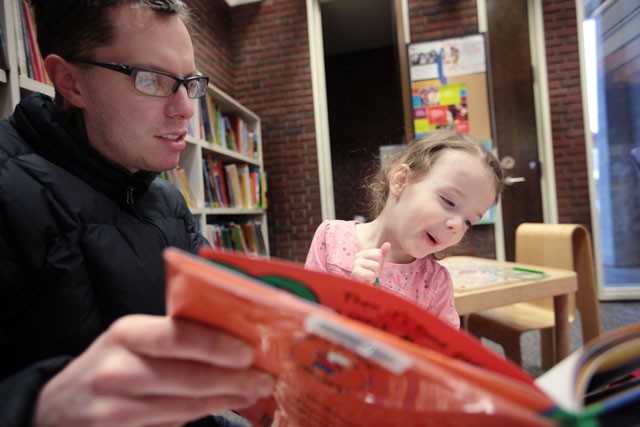When most University of Minnesota students hear “Dinkytown Library,” they think of a bar rather than an actual library.
But the Southeast Library, housed on the corner of Fourth Street and 13th Avenue Southeast, has served the neighborhoods in the area âÄî including the University âÄî for decades.
Now, itâÄôs looking for a new home.
Although Hennepin CountyâÄôs five-year capital budget still lists $12 million for remodeling or replacing the library, County Commissioner Peter McLaughlin said it will move.
The countyâÄôs Property Services assessed the building for possible renovations and found a number of issues like space, parking and accessibility. Their recommendation was to move the library altogether.
McLaughlin said the county and the library staff were unanimous in their evaluation that the building “was not salvageable as a library.”
Now the decision to be made is to move to a different building or to construct a new one. Both options involve finding a location, and with three neighborhoods invested in the libraryâÄôs future, all options will be carefully considered.
Community ties
Laura Saehr is part of the University community that makes up a third of the libraryâÄôs users The rest are residents of Marcy-Holmes, Southeast Como and Prospect Park neighborhoods, head librarian Eric Heideman said.
Saehr likes the intimate feeling of the Southeast Library but mainly visits for the “eclectic selection of books” it offers.
Kristen Cooper, on the other hand, uses the library for its proximity. SheâÄôs a senior lab tech in the UniversityâÄôs chemistry department and uses the library to pick up books she orders through the Hennepin County Library system.
Both Cooper and Saehr live nearby and say that the library is “just convenient.”
The University has its own extensive library system with 14 locations across the Twin Cities campus and almost 7 million books.
But the majority of the UniversityâÄôs fiction collection is housed in Wilson Library, located on the West Bank. For students who live in neighborhoods around the East Bank, Southeast offers an alternative.
Southeast Library itself houses 26,000 items including books, CDs and DVDs and is open 24 hours a week, in stretches on Tuesdays, Thursdays and Saturdays. Heideman said the libraryâÄôs patronage has increased in recent years, which he contributes to a less transient population and more community involvement.
A rough history
Heidman has been working at Southeast since 1996 and is one of the three staff members. In 2006, however, Heidman spent a year as a “roving librarian” when the library, along with two others, was temporarily closed by the city of Minneapolis due to a lack of funds.
When the funding issues became more serious in January 2008, the Minneapolis and Hennepin County library systems merged. The county took charge of the 15 city libraries.
As part of this process, the city requested that three closed libraries be reopened, and Southeast opened its doors for the first time since late December 2006.
Lois Langer Thompson, Hennepin County library director, said the merger was for communityâÄôs benefit.
“It was really about having great library service in Hennepin County,” she said.
The Southeast LibraryâÄôs building was built in 1963, originally as a credit union, and was converted into a library in 1967. No other renovations were made until the reopening, when it got a “spruce up” to make it ready for the public, McLaughlin said. Thompson said no actual funds were allocated for it.
“We just did it,” she said.
There were funds leftover by the city for rehabilitation of community libraries as a result of the merger. Altogether $30 million was set aside by the city, with $3.2 million specifically for the Southeast Library.
McLaughlin said the county agreed to take the money and set aside an additional $8.8 million of its own resources to create a new library in the southeast.
“This is a big investment by the county,” McLaughlin said.
Going forward
The process of relocating the library will be a long one.
Last week, the county held the first meeting to decide how to move forward with the $12 million, Thompson said. There is not a set plan, but both McLaughlin and Thompson said the main idea at the moment is engaging the communities.
The county board and the Hennepin librariesâÄô administration will work on the project together, Thompson said. The plan is to start the discussion with the community sometime this spring. So far only some neighborhood leaders are aware of the potential project.
This rest of this year will be about answering specific questions âÄî the county needs to figure out who uses the library and for what, McLaughlin said. More importantly, the county needs to find a location that will still be accessible to the community and set up a program.
“Because of the unique patronage in a unique âĦ set of neighborhoods, your cookie-cutter neighborhood library may not be whatâÄôs appropriate,” McLaughlin said.
Officials hope for relocation to begin in 2014. McLaughlin said no plans have been made for the current building but that it will likely be sold.








